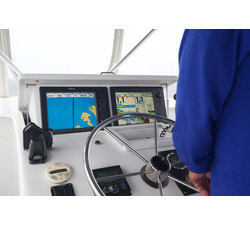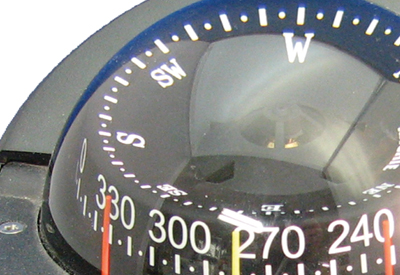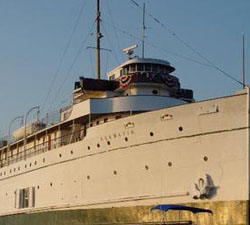Time To Prepare For Next Season, Starting With Electronics

We’ve written previously suggesting that NOW is the good time to do all those maintenance items that we all usually leave to spring-time. The more boaters can get done before the good weather, the easier and less frustrating pre-season commissioning will be. Our friends at the GPS Store sent along this terrific reminder about doing a complete check on electronics:
“People should also pay attention to their boat’s marine electronics and electrical systems, because failures here are just as likely to ruin that first fishing trip or coastal cruise,” said Scott Heffernan, Sales Manager of The GPS Store, Inc. “A few basic steps and system checks can ensure smooth sailing not only on your first trip, but all season long.“
Start at the Source. If your boat’s batteries are weak, not maintained or poorly connected, nothing will work right. Visually inspect and test your boat’s batteries. Inspect and clean corroded posts and terminals, check for signs of leaking electrolytes. Check electrolyte levels and top off with distilled water. After fully charging, retest after several hours. Healthy batteries at rest should read between 12.1 and 12.8 volts. If you have gel cell or AGM batteries, follow manufacturer’s inspection/maintenance guidelines. Even if checked now battery health needs to be monitored all winter. And then re-checked prior to launch.
Beat Corrosion to the Wire. Dust, moisture and corrosion do their dirty work over the off-season, creeping into connections, splices and other weak spots. Check the condition of all connections to your marine electronics and secure as needed. Inspect wires for nicks, cuts or chafed insulation — all potential areas where corrosion can get a foothold. Pay particular attention to areas where wires may rub against wood, metal or fiberglass. Spliced wires, especially those covered with electrical tape, are key trouble spots. Not only are these entry points for corrosion, each extra splice or connection creates added resistance to current flow. Extra wire length, often tie-wrapped up and tucked away, has the same effect, and can hurt performance of your electronics. Minimize entry points for the elements and clean up wire runs.
Inspect All Fuses. This is one of the most common trouble spots when electronics fail. Visually inspecting and replacing any blown or suspect fuses before your first voyage is a cost-effective way to cut down on those “uh-oh” moments. Don’t forget to check all of your electronics’ inline fuses, as well. Do you have spares? Can you find them in a hurry?
Clean, Organize Your Navigation Spots. At the end of each season, it’s not uncommon to end up with a chartplotter that’s plugged with track lines and MOBs from previous trips. Start the season by clearing these out. Fishermen frequently have a year’s worth (or more) of old user points/MOB entries clogging their waypoint list (didn’t I run over a fish once at this spot?). Use this time to clear out unneeded spots while recording and naming those that really matter. On the subject of plotters, this is a great time to update your electronic charts to the latest version. You’ll not only get the benefit of important Coast Guard Notice to Mariner corrections, you’ll often receive new data and features that have been added by the cartography companies – all at a reduced cost.
Check the Transducer. Transducer performance is key to echo sounder performance, yet this “out-of-sight, out-of-mind” component is often overlooked. Fishfinder performance will suffer if transom-mounted transducers have been knocked crooked or not properly installed to shoot straight down. On either transom or thru-hull designs, check the transducer face for marine growth and ensure that paddlewheel speed sensors turn freely. Consider replacing if damaged – or use the opportunity to upgrade to new available technologies that can boost your sounder performance.
Have Spares Handy. While electronics malfunctions can put a damper on any voyage or fishing trip, prepared boaters can often “save the day” by digging into their spare parts kit. A selection of glass and/or blade style fuses, assorted marine wiring connectors, heat shrink tubing, tie wraps, electrical tape, a multimeter, continuity tester and dielectric grease should be in every boater’s electrical “fix-it kit.”
Test everything before you go. Okay, this seems obvious — but you’d be surprised how many boaters don’t do this at home or at the marina before casting off. Power up all your electronics to make certain all systems are working normally. If you do find a problem, it will be much easier to diagnose and fix at home or the dock than out on the water. It’s a good idea to do this before every trip – not just the first one of the season – and to also test important systems like bait/bilge pumps.





























